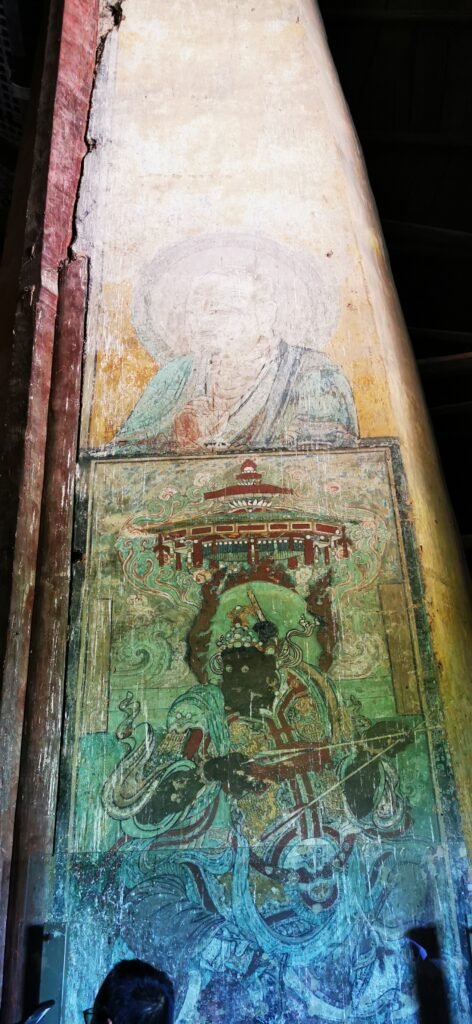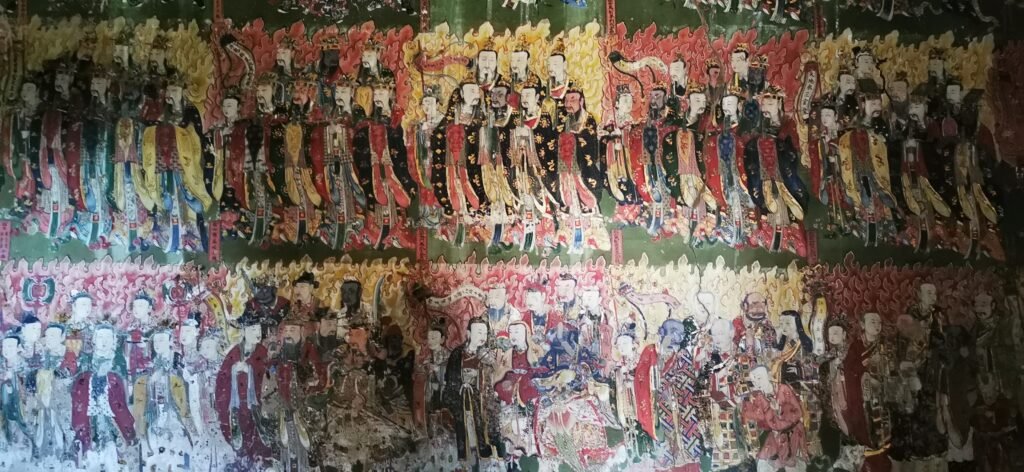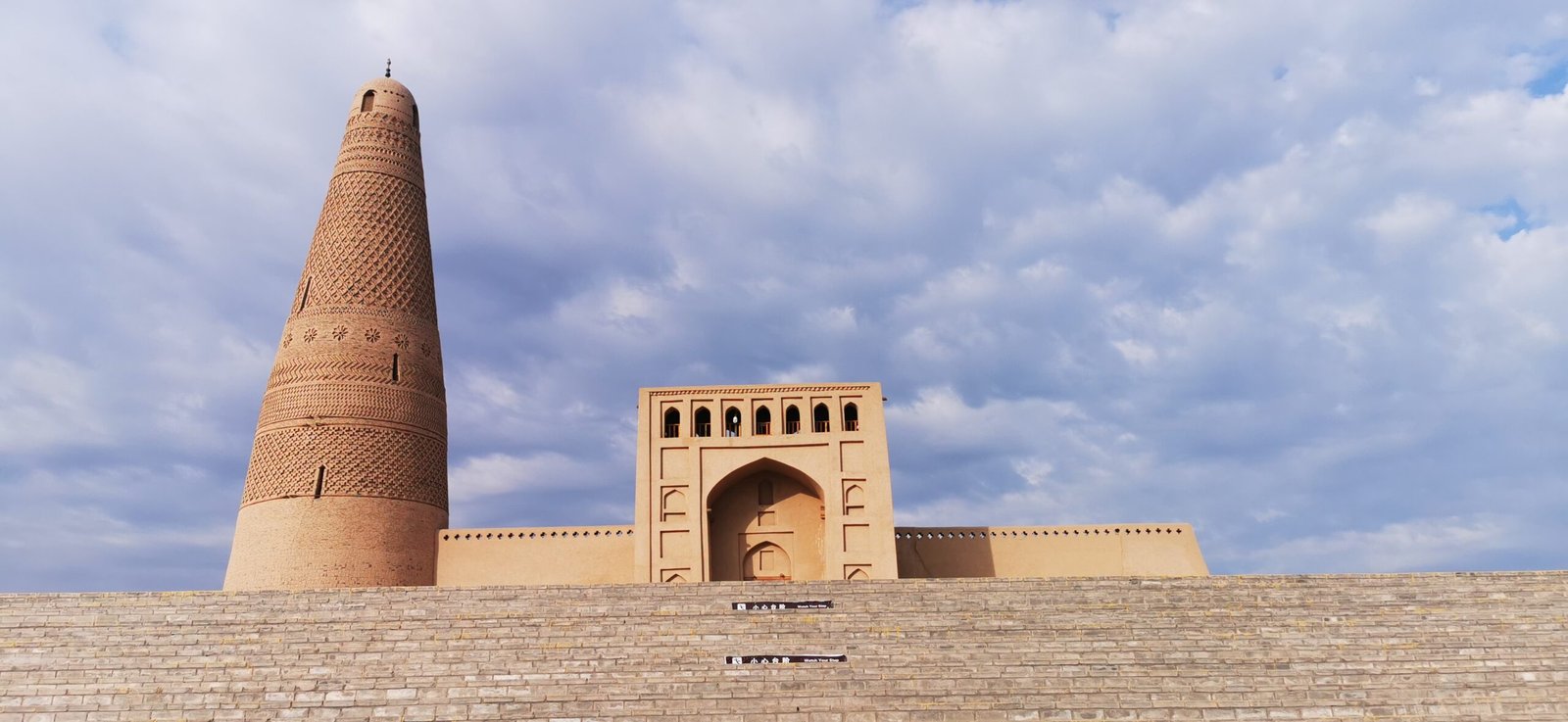Chinese mural paintings are an essential part of the visual and spiritual culture embedded in Chinese Buddhist architecture. These vivid artworks, often covering entire temple walls, offer not only aesthetic beauty but also deep insight into ancient belief systems, daily life, and artistic evolution across dynasties. This article explores where to find the finest examples of mural paintings in China and explains how they intertwine with the design and purpose of Buddhist temples.

The Origins of Chinese Mural Paintings in Buddhist Spaces
A Legacy Carved in Wall and Paint
The development of Chinese mural paintings is inseparable from the spread of Buddhism in China. As Buddhist ideas flourished from the Han Dynasty onward, murals became an expressive medium for illustrating religious narratives. Monks, artisans, and imperial patrons contributed to the creation of elaborate frescoes across grottoes, pagodas, and temple halls.
Unlike standalone artworks, mural paintings in Chinese temples are site-specific, crafted directly onto architectural surfaces. Their composition respects the geometry of the walls, columns, and ceilings, making them inseparable from the architecture of Buddhist temples themselves.
The Role of Architecture in Framing Mural Art
The spatial arrangement of Chinese Buddhist architecture—including axial layouts, tiered halls, and multi-eaved roofs—directly influences the placement and impact of mural paintings. The murals are not just decoration; they function as didactic and spiritual tools, placed where pilgrims and monks would most likely reflect or meditate.
For instance, murals inside the main hall (Daxiong Baodian) often depict scenes from the life of the Buddha, while side chambers may focus on bodhisattvas or guardians, reinforcing the spatial hierarchy of the temple.

Top Destinations to See Chinese Mural Paintings
Dunhuang Mogao Caves – The Crown Jewel of Grotto Art
The Mogao Caves in Dunhuang, Gansu Province, are often considered the apex of grotto art in China. Dating back to the 4th century, this UNESCO World Heritage Site houses nearly 500 caves, many adorned with exquisite murals spanning over a millennium.
These murals present detailed narratives of Buddhist cosmology, legendary tales, and everyday life in ancient China. The architectural integration is remarkable: murals wrap around the cave walls and ceilings, enhancing the immersive experience. For a deeper look at this site, read our article on Yungang Grottoes in China – the start of Buddhism boom.
Yungang Grottoes – Sculptures and Murals in Harmony
Located in Datong, Shanxi Province, the Yungang Grottoes are another prime destination for mural enthusiasts. Although known for their monumental Buddhist sculptures, many caves also feature finely painted murals. These works reflect Northern Wei Dynasty aesthetics and are embedded within the stone-cut architecture, demonstrating the early integration of mural and spatial design.
Longmen Grottoes – Artistic Flourish of the Tang Dynasty
The Longmen Grottoes, near Luoyang in Henan Province, are another site where architecture and painting blend seamlessly. Though much of the mural art has faded over time, restored and preserved sections still reveal the grace and dynamism of Tang Dynasty Buddhist art. Murals here complement the grotto niches, enhancing the narrative dimension of the carvings.
Fahai Temple – Beijing’s Hidden Mural Treasure
Unlike the grottoes, the Fahai Temple in Beijing is a classical temple structure. Built during the Ming Dynasty, its murals are painted on plaster walls within the main hall. The paintings here are noted for their preservation and intricate brushwork, reflecting the sophistication of temple art in the late imperial period.
The use of wooden structure in this temple—following traditional Chinese house construction methods—provides a rare example of how mural painting was adapted to timber-based architecture. See our article on how a carpenter constructs the frame of traditional Chinese house for more on this architectural technique.
Architectural Significance of Mural Placement
Visual Storytelling through Space
In Chinese Buddhist architecture, murals are not randomly placed. Their positioning corresponds with ritual routes, line-of-sight considerations, and light access. Ceilings often bear lotus motifs or celestial beings, guiding the eyes upward toward enlightenment themes, while side walls tell chronological stories as pilgrims move through space.
This storytelling aspect echoes the same principles found in post and lintel construction—an architectural method where form supports function, guiding the viewer’s movement and focus. Learn more in our article What is post and lintel construction in Chinese architecture.
Harmonizing Art and Structure
The integration of murals into the built environment showcases the unity between Chinese mural paintings and architectural design. Whether in stone grottoes or timber-framed temples, the artwork conforms to structural rhythms—columns, roof brackets, lintels—creating a symbiotic relationship between visual art and physical space.
Murals even help indicate the hierarchy of rooms and visitors. In grand temples with Wu Dian roofs—the highest-ranking roof type in Chinese architecture—the most elaborate murals are typically found in the central hall. For more on roof types, see Wu Dian roof – the highest ranking of Chinese roof.
Preserving the Legacy
Challenges of Conservation
Preserving Chinese mural paintings is an ongoing challenge due to their exposure to moisture, light, and human activity. Conservation efforts focus on stabilizing the architectural environment—whether grotto or temple—to prevent further deterioration. This includes controlling humidity and reinforcing structural stability.
The Role of Architecture in Protection
Ancient Chinese builders often designed structures specifically to shield murals. Deep cave recesses, wide overhanging eaves, and enclosed halls all serve to protect painted surfaces from the elements. This architectural foresight ensures that many murals have survived centuries of natural wear.
Conclusion: Art That Lives Within Walls
Exploring Chinese mural paintings offers more than an appreciation of ancient artistry—it provides a window into the spiritual and structural heart of Chinese Buddhist architecture. From the remote caves of Dunhuang to the refined halls of Beijing, these murals continue to enchant visitors with their beauty and depth.
To truly understand these paintings, one must consider the walls they inhabit, the halls they adorn, and the spaces they elevate. Chinese mural art does not simply decorate; it animates the very soul of Buddhist architecture.

